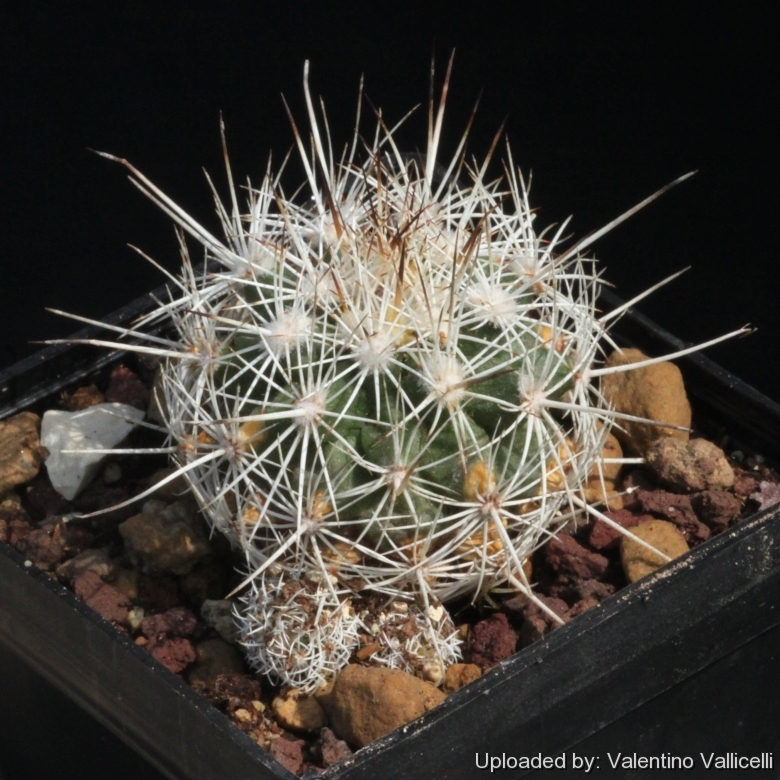Donate now to support the LLIFLE projects.
Your support is critical to our success.
Your support is critical to our success.
Accepted Scientific Name: Turbinicarpus horripilus subs. wrobelianus Nitzschke & Montes
Succulenta (Netherlands) 79(2): 92. 2000

Bravocactus horripilus subs. wrobelianus (Turbinicarpus horripilus subs. wrobelianus) Photo by: Valentino Vallicelli
Synonyms:
- Turbinicarpus horripilus subs. wrobelianus Nitzschke & Montes
- Bravocactus horripilus subs. wrobelianus (Nitzschke & Montes) Doweld
- Turbinicarpus horripilus var. wrobelianus (Nitzschke & Montes) D.Donati & Zanov.
See all synonyms of Turbinicarpus horripilus
back
Accepted name in llifle Database:Turbinicarpus horripilus (Lem. ex Förster) V.John & Říha
Kaktusy (Brno) 19(1): 22 (1983) cf. Repert. Pl. Succ. (I.O.S.), 34: 8 (1985):. 1983
Synonymy: 10
- Turbinicarpus horripilus (Lem. ex Förster) V.John & Říha
- Bravocactus horripilus (Lem.) Doweld
- Echinocactus horripilus (Lem.) Lem.
- Gymnocactus horripilus (Lem.) Backeb.
- Gymnocactus horripilus subs. kvetae Chvastek & Halda
- Mammillaria horripila Lem.
- Neolloydia horripila (Lem.) Britton & Rose
- Pediocactus horripilus (Lem.) Halda
- Thelocactus goldii Bravo
- Thelocactus horripilus (Lem.) Kladiwa & Fittkau
Turbinicarpus horripilus subs. kvetae (Chvastek & Halda) Chvastek & Halda
Acta Mus. Richnov., Sect. Nat. 9(1): 76. 2002
Accepted name in llifle Database:
Turbinicarpus horripilus f. monstruosa
Accepted name in llifle Database:
Turbinicarpus horripilus subs. wrobelianus Nitzschke & Montes
Succulenta (Netherlands) 79(2): 92. 2000
Synonymy: 3
- Turbinicarpus horripilus subs. wrobelianus Nitzschke & Montes
- Bravocactus horripilus subs. wrobelianus (Nitzschke & Montes) Doweld
- Turbinicarpus horripilus var. wrobelianus (Nitzschke & Montes) D.Donati & Zanov.
back
| Your Actions | |
|---|---|
| Back to Bravocactus index | |
| Back to Cactaceae index | |
 |
Back to Cacti Encyclopedia index |








